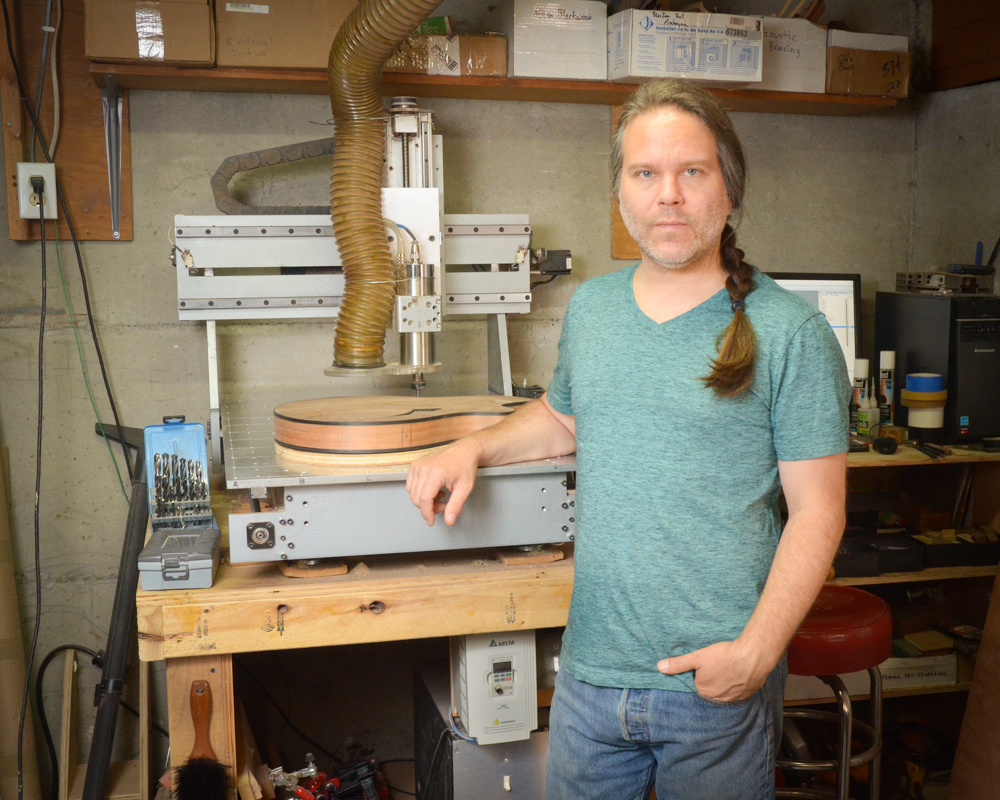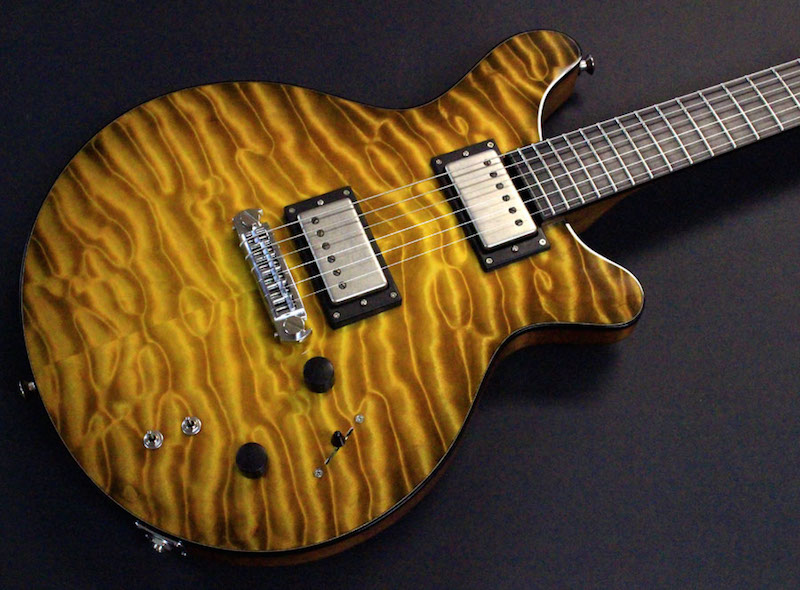We may receive a commission when you use our affiliate links. However, this does not impact our recommendations.
Meet the artists from the December 2017 issue
How five masterful makers integrate CNC and CAD technology into their woodworking
In the December 2017 issue of Popular Woodworking magazine, the article, Digital Artistry gives the readers a peek at what five professional woodworkers are doing with digital tools in their shops. Each has an extensive traditional woodworking background and many years of experience before they added digital tools like CAD software and CNC machines. All five are friends and we meet regularly to exchange ideas and techniques as we explore this new digital world.
For the print article, I thought it would be more useful for readers if each woodworker would introduce themselves, say something about their backgrounds, their work and how they got started using digital tools. To do this, I sent out a survey to each member of the group with a series of questions.
With the space limitations inherent to print publishing, only a few quotes from each questionnaire made it into the final article. With so much information collected, I thought Popular Woodworking’s readers would like to hear more about each woodworker’s world. So, in this series of posts on Digital Artistry, I’ll share each woodworker’s survey answers with our online readers.
This post is about Seattle area guitar maker, David Myka. David is a long time guitar maker who’s skilled in the many woodworking processes need to create acoustic and electric instruments. His instruments are far from being off the rack. Each is very much a custom build. Every guitar is created to fit individual requirements including special electronics, inlays and custom necks and fretboards and guitar body shapes. He is most famous for his incredible custom archtop electric guitars. David is a long time CAD user and has a CNC in his shop to help him in his work for a number of years. Here’s a quick interview with David in his shop…
So, here is David in his own words…
David Myka
History Section
Tell us about your woodworking history
My first start in woodworking was in the garden shed of a good friend of mine. We always wanted an electric guitar but didn’t have the means to acquire them. Gathering whatever materials we could in the form of old stereo receivers, junk guitars and boards of wood, we started to explore how to build electric guitars. In 10th grade, I took on an apprenticeship as a model and mold maker for an architectural terra cotta company. This is where I learned to work with precision and detail. I also had access to the wood shop and I built several guitars.
 After a break of many years, I began working in construction – framing houses, doing finish carpentry and eventually finding my way into custom cabinetry and furniture making. I always came back to guitar making and after a short time in the tech industry, I formally started my guitar business and began to build guitars full time.
After a break of many years, I began working in construction – framing houses, doing finish carpentry and eventually finding my way into custom cabinetry and furniture making. I always came back to guitar making and after a short time in the tech industry, I formally started my guitar business and began to build guitars full time.
Describe what you do as a woodworker?
I build custom musical instruments for a diverse group of musicians. Projects range from interpretations on the classic designs, to fully unique instruments capable of integrating with a modern studio environment. Woodworking is a very important part of what I do and that is supplemented with the electronics design that makes my instruments relevant to the current guitarist’s toolkit.
A quick description of your shop
My shop is very minimal. I have the requisite set of tools: table saw, band saw, drum sander, disc and belt sander, all manner of chisels, planes, and handsaws, many marking and measuring tools, and a custom built Carl Bruce CNC that is 25” x 37” with a cutting height of 7.5”, perfect for guitars. I use a small garage space for my machines with an additional room in the basement where I do much of the handwork and assembly.
 How and when did you get started using digital woodworking tools? And, why?
How and when did you get started using digital woodworking tools? And, why?
I got started in CAD/CAM/CNC when the technology became affordable in a small enough footprint for a small shop like mine. My approach was to purchase the software and develop a set of designs and then to bring the CNC router into the shop. This way I was able to spread out the cost of the tool and also to have some work ready for the machine to do.
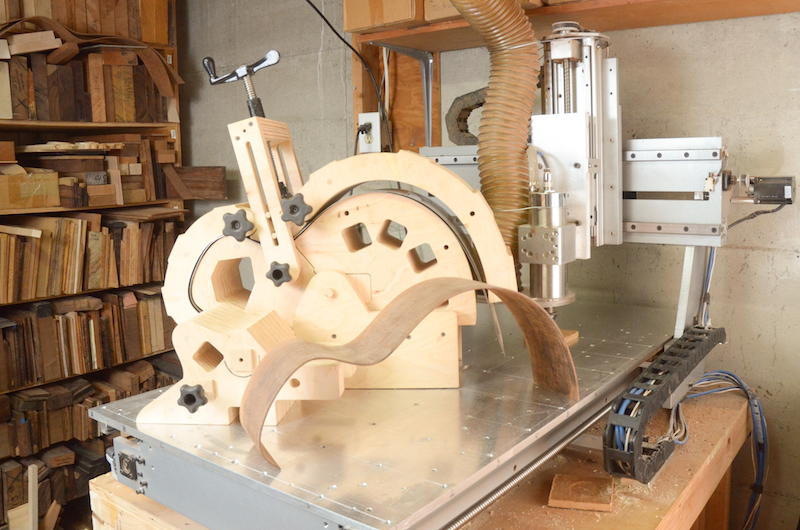 How do you use your new digital tools?
How do you use your new digital tools?
This tool has replaced most of my analog jigs and fixtures. I use the CNC for making accurate and fast templates, jigs, and fixtures as well as the machining many of the wood parts to build my guitars. The CAD environment is very integral to what I do as the initial design phase starts here. CAD has opened up so much for me in terms of overall visualization and communication of design ideas and this has streamlined the design process with my clients. The powerful 3D design space has opened up a whole new development environment that allows me to explore and produce more complex designs efficiently. One of the best things about working in CAD is the space it saves. What took up most of my shelf space (jigs and fixtures) now fits on a thumb drive.
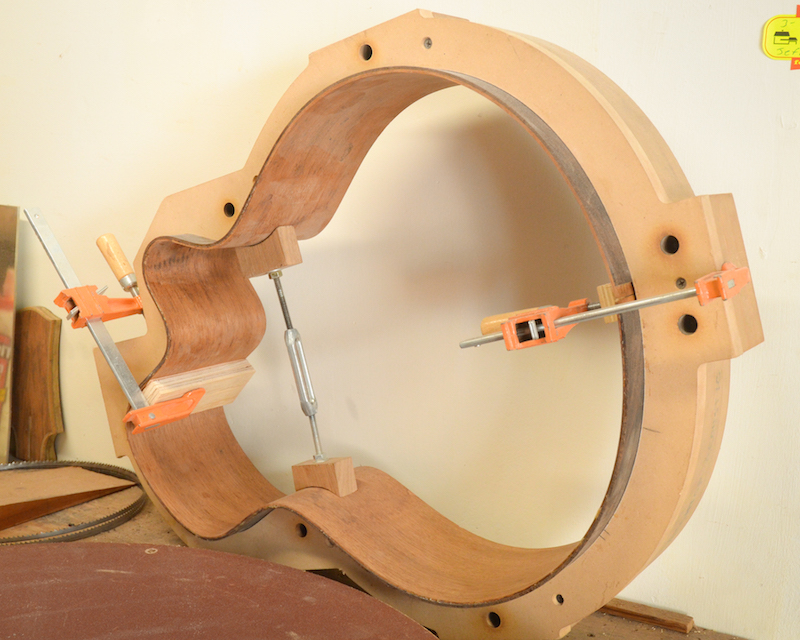 How did you, or are you, learn to use these tools?
How did you, or are you, learn to use these tools?
I am self-taught in everything I do. My approach is to develop a project that uses new technology and to direct my learning towards the accomplishment of that goal.
What are the challenges you have/had with these tools?
The only real issue I had is not having the time to develop a comprehensive system. It is something I am working on but it is mainly a time issue. Due to the nature of small businesses I had to slowly integrate the new technology into my existing analog systems. While I was able to continue to build high-quality guitars during the process, the integration of the digital design and manufacturing processes changed everything about the way I build guitars. I had to make sure that my existing designs were accurately defined in the CAD environment so that the new CNC parts would fit with the old analog parts. If I had the time I would have developed an entire design and then moved it to production.
What benefits are you are getting out of CAD?
CAD is a vast design space and the ability to explore and visualize my ideas is fantastic. I have always had the ability to see my designs in my mind very clearly in 3D. It was only when I found 3D CAD that I was able to fully communicate those designs.
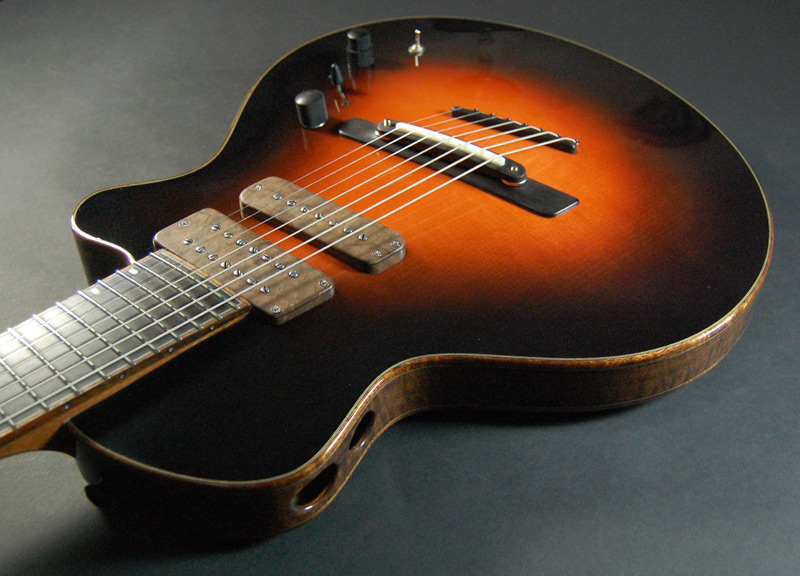 What benefits are you getting out of using a CNC?
What benefits are you getting out of using a CNC?
Along with CAD technology, my CNC has revolutionized my design process, manufacturing workflow, the design of my shop, and the quality of the work I do. I used to spend a great deal of time roughing out material into shapes that I could more easily work with. Now I program the CNC to remove most of the wood while I spend my time with design and the final fine detail work. This allows me to focus on what differentiates my work from everything else in the marketplace.
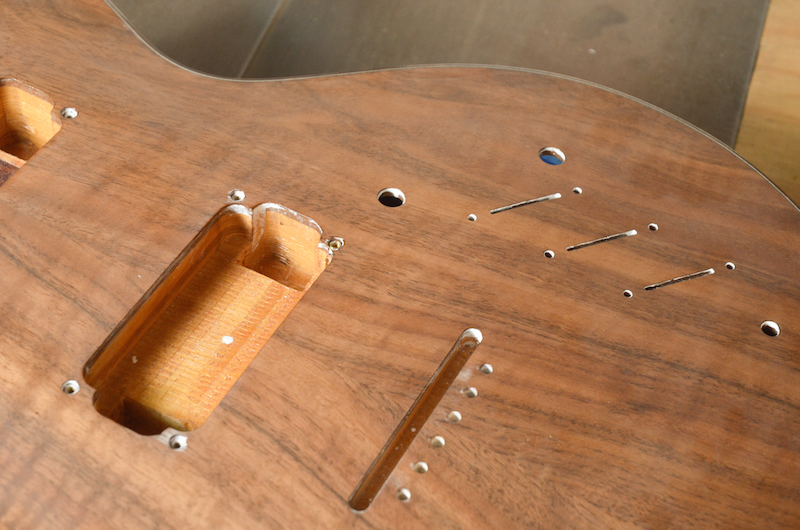 Can you describe your CNC?
Can you describe your CNC?
I have a custom Carl Bruce CNC machine with a bare bones setup. The work envelope is 25” x 37” x 7.5”, it has a water-cooled 3HP 24,000 rpm spindle, and is heavily overbuilt. This translates into accuracy and precision.
What’s New Section
 What’s different or surprised you once you started using these tools?
What’s different or surprised you once you started using these tools?
The design space available in the 3D CAD environment is unlimited. Not only was I able to finally visualize what I once held in my mind’s eye but I am now able to develop a visual model to share with my clients. This brings them into the design process at a much deeper level than was previously possible and allows me to complete a design and show a prototype before I process any wood.
 Has your process changed with these tools? How so?
Has your process changed with these tools? How so?
How does it integrate or change your woodworking process of making things?
I used to spend my time roughing out wood and preparing it for the handwork. Now I have the CNC do the dirty work and I focus my time designing the instruments and doing the fine detail work. This is time spent where it really makes a difference. Roughing out a neck blank isn’t nearly as critical as the final shaping of that neck.
What would you do differently if you were starting out now?
I am not sure I would change much. There is a great benefit to learning how to work with a material directly (hand tools) and then taking that experience to the digital realm. It is impossible to learn the quality of materials and develop the insight necessary to work with them as a barrier in between yourself and the work. Once you acquire the experience you need to build what you want it is then time to move it to the digital realm.
David Myka
Additional Resources
- David Myka’s website click here
- All posts on the featured Digital Artists, click here
- December 2017 Issue of Popular Woodworking click here
- Digital Woodworking on Instagram
- Personal Work on Instagram
- Digital Woodworking YouTube Channel
Here are some supplies and tools we find essential in our everyday work around the shop. We may receive a commission from sales referred by our links; however, we have carefully selected these products for their usefulness and quality.



